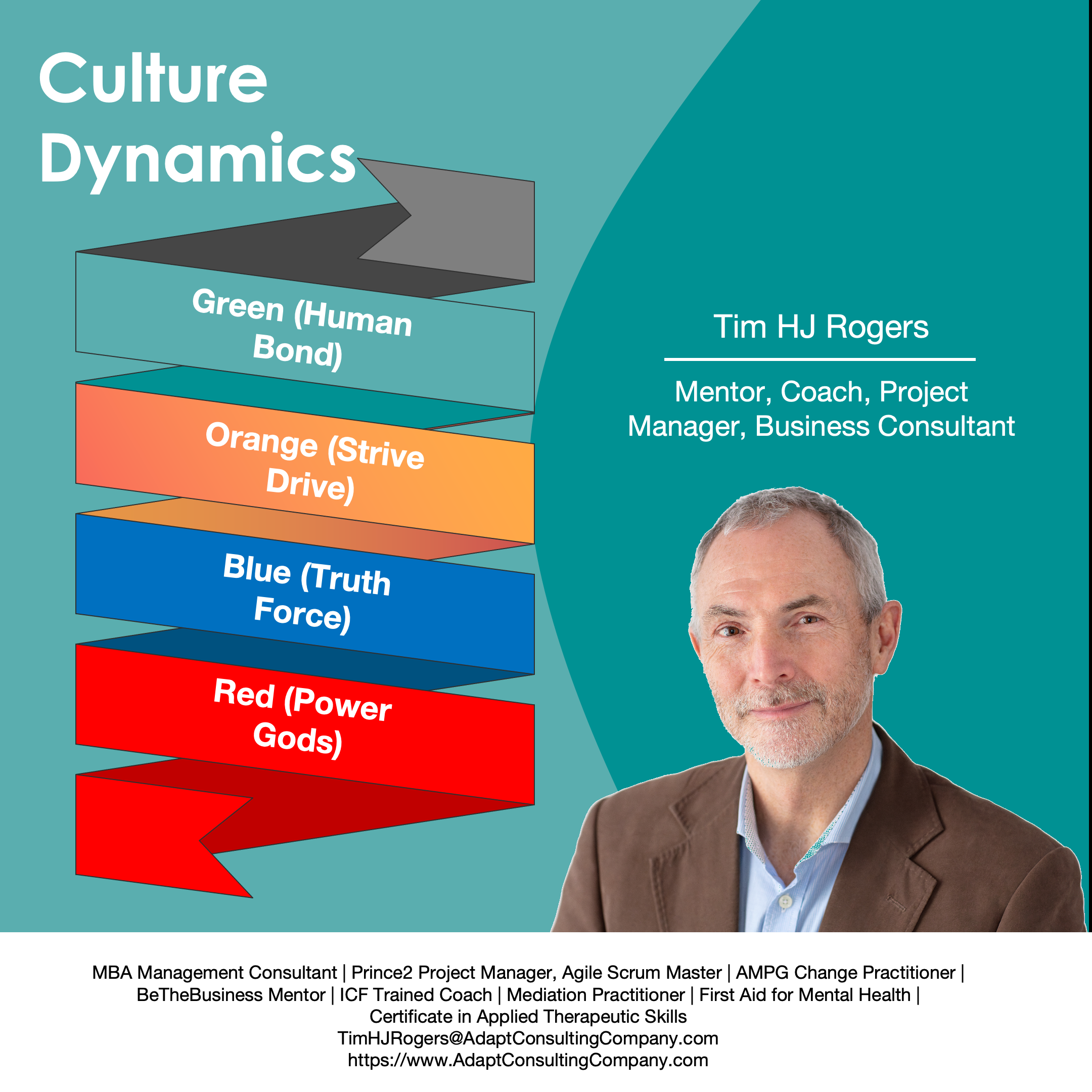When discussing culture and cultural change within organizations, it is essential to consider various models and frameworks that highlight different aspects of organizational behavior and leadership.

Leadership Styles and Cultural Frameworks:
1. Goldman’s Six Leadership Styles: This model identifies distinct leadership approaches that can significantly influence organizational culture. These styles range from coercive to democratic, each impacting how leaders communicate, engage, and motivate employees.
2. Scholes and Johnson’s Cultural Web: This framework offers a comprehensive view of organizational culture through elements like stories, rituals, symbols, power structures, and control systems. It emphasizes the intangible aspects that shape the collective understanding and behaviors within an organization.
Cultural Elements and Leadership Communication:
Components of Culture: Important aspects such as stories, rituals, and power structures play critical roles in defining an organization’s culture. These elements help form the underlying ethos and values that guide employee behavior and organizational practices.
Leadership Communication: Effective leadership involves the use of varied communication, command, control, and coordination methods. Each leadership style and communication strategy can differently influence the cultural landscape of an organization.
Integration of Spiral Dynamics:
Spiral Dynamics provides a valuable lens for understanding the evolutionary stages of an organization. It recognizes that organizations are at different developmental phases, from nascent entities without formal structures to highly regulated businesses burdened by rigid rules that may inhibit innovation.
Early Stage Organizations: These are characterized by a lack of formal rules, structures, processes, and policies. Being in the early stages of development, they often operate in a more fluid and dynamic manner, which can be advantageous for rapid innovation and responsiveness.
Regulated Environments: In contrast, certain organizations operate within heavily regulated industries. These entities have established rules and policies that, while providing structure and consistency, may also stifle innovation, entrepreneurship, and individual recognition.
Altruistic Approaches: Some organizations prioritize community and social well-being over profit. These groups focus on making positive contributions to society, which can foster a culture of altruism and collective benefit rather than individual rewards.
Spiral Dynamics describes the evolution of values and consciousness over time. It categorizes these developmental stages into different color-coded levels, each representing distinct ways of thinking, behaving, and interacting with the world. Here’s a brief summary of the differences between Red, Blue, Orange, and Green/Teal cultures:
Red (Power Gods)
Dominant Themes: Power, action, and survival; immediate gratification.
Characteristics: This stage is ego-centric and focused on expressing power authoritatively without guilt to enforce respect and control. It values individualism, spontaneity, and living in the moment.
Examples: Often seen in rebellious youth, feudal kingdoms, gang leaders, or tyrannical rulers.
Blue (Truth Force)
Dominant Themes: Order, stability, and meaning; there is an absolute truth.
Characteristics: Lives by codes of conduct based on absolute and immutable principles. The focus is on discipline, duty, and providing structure. It emphasizes following rules, living for a purpose, and maintaining a strong sense of morality.
Examples: Strong in religious organizations, traditionalist movements, or any system that emphasizes law and order.
Orange (Strive Drive)
Dominant Themes: Success, autonomy, and achievement; the world is a chessboard.
Characteristics: Values achievement and strategic thinking. Orange culture is highly entrepreneurial and thrives on innovation and risk-taking. It champions individual success and is meritocratic.
Examples: Common in corporate settings, capitalist societies, and scientific communities.
Green (Human Bond)
Dominant Themes: Community, sharing, and equality; importance of feelings and relationships.
Characteristics: Focuses on human bonding and emotional depth. Green values community and cooperation over competition. It is sensitive to social issues and seeks harmony and consensus.
Examples: Often found in nonprofit sectors, activist groups, and any organization prioritizing social justice and community welfare.
Teal (Evolutionary Flow)
Dominant Themes: Integration, wholeness, and self-management; complex systems thinking.
Characteristics: Teal culture combines the healthy aspects of all previous stages. It values autonomy, mastery, and purpose, emphasizing fluid structures and distributed authority. Teal is innovative in management and governance, seeing the organization as a living entity.
Examples: Cutting-edge companies like those practicing Holacracy, and in communities or organizations focused on holistic practices.
Each of these cultural stages represents a way of organizing human life and shows a pathway for growth and transformation. The shift from Red to Teal marks a movement from self-centered power dynamics to complex, integrated, and holistic systems thinking.
In summary, integrating insights from Goldman’s leadership styles, Scholes and Johnson’s cultural web, and Spiral Dynamics provides a multifaceted view of organizational culture. This comprehensive approach allows for a deeper understanding of how organizations evolve, operate, and can be effectively led through various stages of their development.
Tim HJ Rogers
Consult | CoCreate | Deliver
I support people and teams to grow, perform and succeed unlocking potential as a partner Consultant, Coach, Project and Change Manager. Together we can deliver projects and change, and improve the confidence, capacity, drive and desire of the people I work with.
ICF Trained Coach | MBA Management Consultant | PRINCE2 Project Manager, Agile Scrum Master | AMPG Change Practitioner | Mediation Practitioner | BeTheBusiness Mentor | 4 x GB Gold Medalist | First Aid for Mental Health | Certificate in Applied Therapeutic Skills
#people #process #performance #projects #programmes #pmo #change #processimprovement #projectmanagement #changemanagement #workshops #mediation #coach #icfcoach #mentor #facilitation #training #jersey #channelislands
